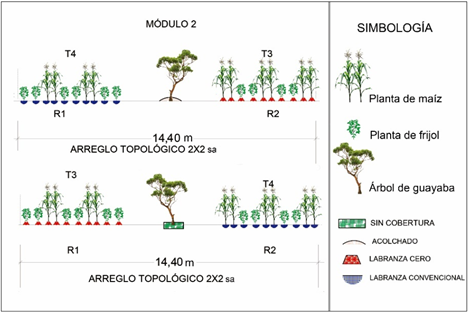Corn and Beans in MIAF with Dif ferent Tillages and Topological Arrangements
DOI:
https://doi.org/10.28940/terra.v42i0.1388Keywords:
conservation, conventional, narrow furrow, temporary, vertisolAbstract
The intensification with the milpa system interspersed with fruit trees (MIAF) is achieving the objectives set: food security, increasing the relative ef ficiency of the land (LER), protecting the soil against erosion and significantly increasing net family income. However, it is also evident that there is a need to continue exploring new alternatives to further intensify the use of arable land, according to the specific climatic and soil conditions of dif ferent regions of the country. Therefore, the objective of this research was to study the response of corn and bean yield to the tillage method and the topological arrangement in a Vertisol. This study was carried out in the experimental field center of Chiapas (CECECH) of the National Institute of Forestry, Agricultural and Livestock Research (INIFAP). The factors studied were the topological arrangement (AT) at three levels: 1 × 1, 2 × 2 and 2 × 2sa (narrow furrow) and tillage method (MDL) at two levels: conservation tillage (LC) and conventional tillage (LCV), in factorial combination, under a completely randomized experimental design with two repetitions. In a year in which drought occurred, statistical dif ferences (P ≤ 0.05) were obtained between MDL for corn yield and the highest was obtained in the LC treatments. Bean yield was af fected by the AT × MDL interaction (P ≤ 0.05). The maximum LER was obtained with the 2 × 2 LCV treatment. The reduction of the furrow width even with a higher population density and fertilization dose per m2 with the AT 2 × 2sa did not significantly increase the yield under the conditions in which the work was carried out.
Downloads
Publication Facts
Reviewer profiles N/A
Author statements
- Academic society
- Terra Latinoamericana
- Publisher
- Mexican Society of Soil Science, C.A.

















